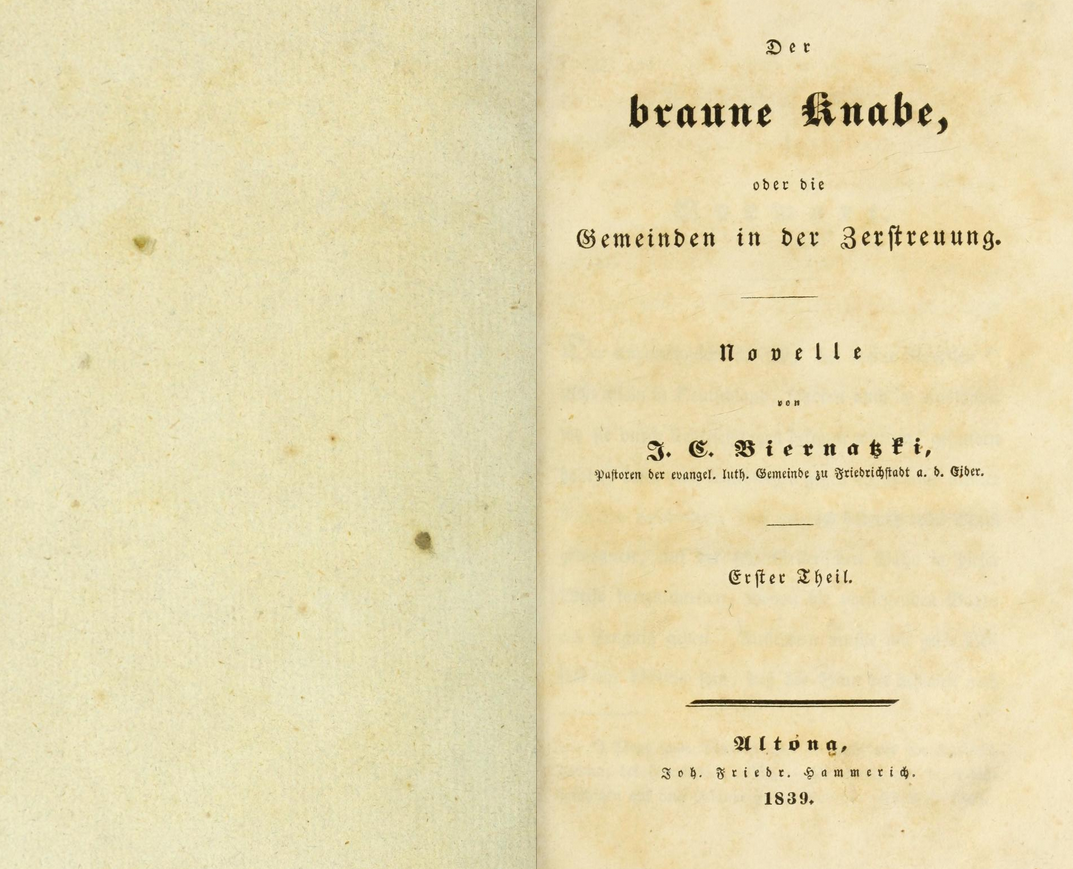Johann Christoph Biernatzki was a theologian and writer whose lengthy 1839 novel The Brown Boy (Der braune Knabe) provides a unique insight into German attitudes toward American slavery and Black-White relations. First and foremost, the novel is a theological tract with a starkly anti-Catholic bent, but Biernatzki uses American slavery as the tool to make his points about faith. The novel remained popular through the nineteenth century, being printed in its final edition in 1903. Part of its popularity surely lay in its presumption that (Protestant) Germany was the land of true faith and real freedom.
In the story, the protagonist is Walter, a white German Protestant seeking religious freedom by emigrating to America. On the way he is shipwrecked and rescued by an Black sailor named Paolo, which opens his eyes to the struggle of Black people in the United States. He is horrified by the way that slaves are abused and even tries to intervene when one woman is to be whipped, only to be beaten himself and then thrown out of the state of Louisiana. The woman in question, Carridoja, escapes and flees with Walter into the wilderness, and together they find refuge with a Native American tribe. They marry and have a daughter, but, tragically, while Walter is away the tribe is attacked by planters who kill Carridoja. Thinking his daughter is dead, Walter returns to Germany. While recounting his tale to his friend Urban, Walter encounters his daughter disguised as a boy in Urban’s service. Her true identity is revealed, and she declares her love for Urban, only to be rejected. Distraught and alienated, she lives the rest of her days in a convent.
The novel offers an unrelenting critique of slavery and does not shy away from depicting its violence. It is also remarkable as one of the few German novels that depicted African Americans positively and even thematized a happy interracial relationship as well as a mixed-race child who tries to fit in back in Germany. At the same time, the novel demonstrates the limits of the German interracial imagination. The protagonist plays the role of a “white savior,” and, although positive, the author’s descriptions of African Americans and Native Americans are shot through with patronizing stereotypes. Walter’s marriage to Carridoja can only take place among “savage” Native Americans far from “civilization,” and it seems that the threat their union posed to the racial order is too great to be allowed to last. Similarly, the novel’s ambivalence about the daughter Carridoja’s racial and gender identity (embedded in the very title of the novel) suggests there is no place for her in respectable bourgeois society. In a theme familiar from the later twentieth century, the non-white German child in Biernatzki’s novel is a “problem”: she creates tensions that cannot be resolved by being integrated into a happy family life, itself an allegory for the German nation, but only through exclusion and isolation.
Jeff Bowersox
deutsch

Source: J. C. Biernatzki, Der braune Knabe, oder die Gemeinden in der Zerstreuung (Altona: Joh. Friedr. Hammerich, 1839).

Biernatzki, “The Brown Boy” (1839) by Jeff Bowersox is licensed under a Creative Commons Attribution-ShareAlike 4.0 International License. Permissions beyond the scope of this license may be available at https://blackcentraleurope.com/who-we-are/.